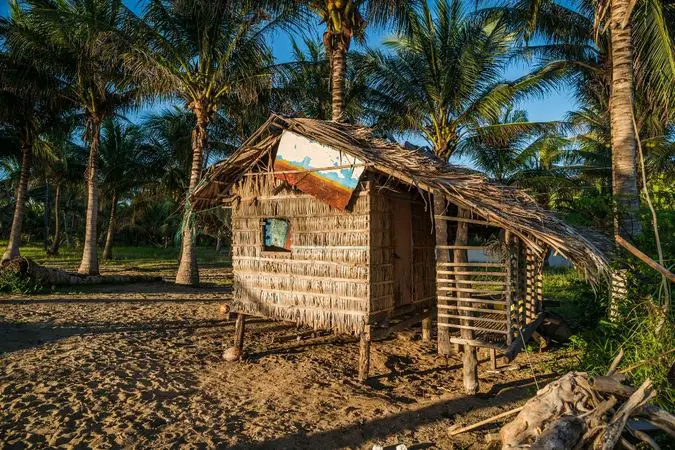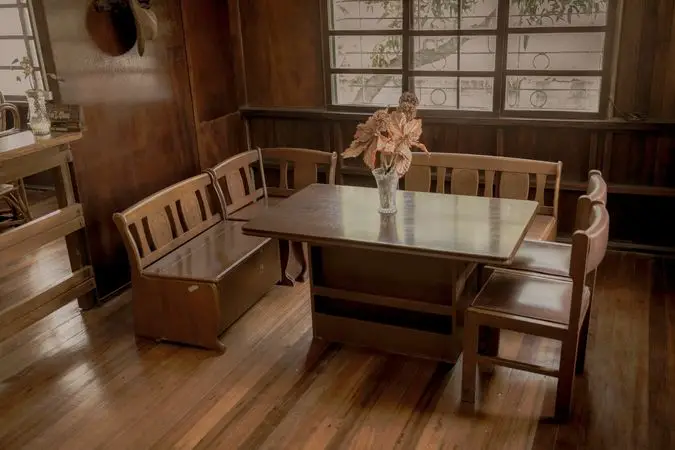For Filipinos, houses are more than just a place to live; they symbolize family and community. In the Philippines, building a home is often viewed as a joint effort, with family members and neighbors pitching in to assist with the construction. This practice shows Filipinos’ strong sense of community and the importance on tight familial ties.
Filipinos place a high value on the aesthetics of their homes. Many traditional Filipino houses are embellished with exquisite carvings and decorations highlighting the builders’ creative talent and craftsmanship. This reflects the significance of beauty and innovation in Filipino culture.
Furthermore, owning a home in the Philippines is frequently regarded as a sign of accomplishment and social standing. Home ownership is a long-term aspiration for many Filipinos that necessitates hard work and perseverance. It represents achievement and stability, which are highly prized in Filipino society.
Houses are important in Filipino culture, signifying the value of community, creativity, and achievement. Filipinos are quite proud of their homes and regard them as an important part of their life.
Table of Contents
Role of the house in Filipino cultural setting
Shelter
Houses provide shelter and protection for individuals and families, shielding them from the elements and providing a safe and secure space to call home.
Family ties
Houses are a symbol of family ties and unity in the Philippines. It is common for several generations of a family to live together under one roof, creating a strong sense of family bonds and community.
Status and achievement
In Filipino culture, owning a house is seen as a sign of success and achievement and is often a source of pride for families.
Venue of hospitality
Filipinos are known for their warm and welcoming hospitality, and the house serves as a venue for socializing and entertaining guests.
Symbol of cultural identity
Traditional Filipino houses, such as the nipa hut and bahay kubo, are iconic symbols of Filipino culture and history. Houses represent the unique architectural style and identity of the country and its people.
Sense of belonging
Houses provide a sense of belonging and attachment to a particular place or community. Filipinos often have a solid attachment to their homes and neighborhoods, contributing to their overall sense of identity and well-being.
Houses are highly valued in Filipino culture for their practical, social, and cultural significance and are an important part of the Filipino way of life.
Traditional houses
Traditional Filipino houses are a significant part of the country’s architectural heritage and are often called “bahay kubo” or “nipa hut.” These houses were typically made from natural materials in the surrounding environment, such as bamboo, wood, and thatched roofs made from nipa palm leaves.

Stilted structure
The house is elevated on stilts to protect it from flooding and to promote air circulation.
Thatched roof
The roof is made from nipa palm leaves, which provide shade and protection from the sun and rain.
Open and airy design
The house is designed to allow air to circulate freely, with open windows and doors and a high ceiling to promote natural ventilation.
Simple and functional layout
The house is typically rectangular or square shape, with a central living area and sleeping quarters arranged around it. Furniture is minimal and often made from natural materials.
Connection to nature
Traditional Filipino houses are designed to blend in with the surrounding environment and often incorporate natural elements such as gardens, courtyards, and water features.
Cultural significance
The nipa hut symbolizes Filipino identity and heritage, representing the country’s rural and agricultural roots.
Today, traditional Filipino houses are less common in urban areas. Still, they remain an important part of the country’s cultural heritage and are often preserved and celebrated in museums, cultural centers, and historical sites.
Different house styles
The Philippines’ rich architectural heritage is reflected in its various house styles, influenced by different cultures and historical periods.
Bahay Kubo
The traditional Filipino house is a simple, stilted structure made from natural materials like bamboo, wood, and thatched roofs made from nipa palm leaves.
Spanish Colonial architecture
The Spanish colonial period lasted for over 300 years and significantly impacted Filipino architecture. Houses from this period feature ornate facades, wrought-iron balconies, and tiled roofs.
American Colonial architecture
During the American colonial period, the American neoclassical style influenced houses in the Philippines, which featured symmetrical facades, columns, and pediments.
Bahay na bato
This house combines traditional Filipino and Spanish colonial styles, featuring a stone or brick lower level and a wooden upper level.
Art Deco
This style emerged in the 1920s and 1930s and features streamlined, geometric forms, and bold colors. Art Deco is often seen in public buildings and commercial structures in the Philippines.
Post-World War II architecture
Following World War II, the Philippines experienced a building boom, and modernist architecture emerged as the dominant style. Buildings from this period feature clean lines, minimal ornamentation, and functional design.
Contemporary Filipino architecture
Filipino architects create innovative and sustainable designs that reflect the country’s cultural and environmental contexts. These houses often incorporate natural materials, green spaces, and climate-responsive design features.
These are just a few examples of the many different house styles in the Philippines, each with a unique history and cultural significance.
Regional differences
The Philippines is composed of over 7,000 islands, and as such, there are significant regional differences in the architectural styles of Filipino homes. Here are some of the notable regional differences in Filipino homes:
Luzon region
This region includes the capital city of Manila and features a mix of Spanish and American colonial architecture and traditional Filipino houses like the Bahay Kubo. The houses in this region are often built of concrete or brick and feature ornate facades and tiled roofs.
Visayas region
The Visayas region is located in the central part of the Philippines and is home to many indigenous tribes. The houses in this region often feature thatched roofs made from nipa palm leaves and are designed to be open and airy to promote natural ventilation.
Mindanao region
The southernmost region of the Philippines is known for its Islamic influence, and houses often feature colorful geometric patterns and intricate carvings. Many houses in Mindanao are also built on stilts to protect against flooding.
Cordillera region
This mountainous region in northern Luzon is home to the Igorot people, who traditionally live in communal longhouses called “bale.” These houses are built of wood and bamboo and feature steeply pitched roofs to shed snow and rain.
Bicol region
The Bicol region in southeastern Luzon is known for its Mayon Volcano and is home to houses built of volcanic rock called “sili.” These houses are designed to withstand frequent earthquakes and volcanic eruptions in the region.
These are just a few examples of the many regional differences in Filipino homes, which reflect the country’s diverse cultural, geographical, and historical contexts.
Interior designs
The interior design of Filipino homes reflects the country’s rich cultural heritage and is often a mix of traditional and modern styles.
Wooden furniture
Wood is a popular material for furniture in Filipino homes, and many pieces are made from locally sourced hardwoods like narra or acacia. Furniture often features intricate carvings and decorative details.
Textiles
Textiles play a significant role in Filipino interior design, and many homes feature handwoven textiles like the “banig” (a traditional mat made from pandan leaves) or the “tinalak” (a woven fabric made by the T’boli tribe).
Colorful accents
Colorful accents like throw pillows, curtains, and wall hangings are a common feature of Filipino homes. Bright colors like red, yellow, and orange often add warmth and vibrancy to a space.
Indigenous materials
Many Filipino homes incorporate indigenous materials like bamboo, rattan, and abaca (a type of fiber derived from the banana plant) into their interior design. These materials add texture and interest to a space while supporting local communities.
Cross-cultural influences
Many different cultures throughout its history have influenced the Philippines, and this is reflected in its interior design. For example, Spanish colonial homes may feature wrought-iron chandeliers or wooden statues of saints, while American colonial homes may have built-in bookshelves or Art Deco-inspired light fixtures.
Open layout
Filipino homes often feature an open layout, with the living room, dining room, and kitchen all in one large space. This allows for easy socializing and entertaining and is well-suited to the country’s warm climate.
Modern Filipino houses
Modern housing units in the Philippines are often designed with contemporary aesthetics and functionality in mind. Here are some of the notable features of modern housing units in the country:
Smart home technology
Many modern housing units are equipped with innovative home technology allowing homeowners to control various home functions through smartphones or voice-activated devices.
Sustainable design
Sustainable design features are becoming increasingly common in modern housing units. These features include solar panels, rainwater harvesting systems, and energy-efficient appliances.
Open-plan layout
The open-plan layout is a popular feature of modern housing units in the Philippines. This design maximizes space and encourages socializing among family members and guests.
High-end finishes
Modern housing units often feature high-end finishes like granite countertops, hardwood floors, and designer light fixtures.
Amenities
Many modern housing units come with amenities like swimming pools, gyms, and clubhouses, which provide additional living spaces and recreational opportunities.
Security features
Security is a priority in modern housing units, and many come with gated entrances, CCTV cameras, and 24/7 security personnel.
Accessibility
Modern housing units are often located in accessible areas near transportation hubs, commercial establishments, and schools.
Overall, modern housing units in the Philippines offer a balance of aesthetics, functionality, and security, catering to the needs and preferences of the modern Filipino family.
Challenges in Filipino House Design and Construction
Designing and constructing houses in the Philippines can be challenging for various reasons.
Natural disasters
The Philippines is a geologically active country, prone to earthquakes, typhoons, floods, and landslides. Designing and constructing houses that can withstand these natural disasters is crucial but challenging. Materials, structural design, and location are all factors to consider.
Limited space
Many Filipinos live in densely populated urban areas where space is limited. Designing and constructing efficient houses in terms of space while providing the necessary living conditions can be challenging.
Budget constraints
Most Filipinos cannot afford to build a large, luxurious house. Designing and constructing functional and aesthetically pleasing houses on a limited budget is a common challenge.
Building regulations
In the Philippines, there are building regulations that must be followed. Compliance with these regulations can sometimes be complex, and failure to comply can lead to fines or even demolition of the structure.
Accessibility
The Philippines is an archipelago composed of thousands of islands, some remote and difficult to access. Designing and constructing houses in these areas can be challenging due to the limited availability of building materials and skilled labor.
Cultural preferences
Filipinos have cultural preferences regarding house design, which may conflict with modern design elements. This can challenge balancing traditional and modern design while still meeting the homeowner’s needs.
Conclusion
The Filipino house has a rich cultural background and various styles that reflect Filipino builders’ artistic talent and craftsmanship. Homes are highly prized in Filipino culture as symbols of community, creativity, and achievement.
Traditional Filipino houses are ornately carved and decorated, but modern dwelling units strike a compromise between aesthetics, functionality, and security.
In the Philippines, owning a home is frequently regarded as a sign of success and social standing. Building a house is frequently viewed as a joint effort, reflecting Filipino culture’s strong sense of community and familial relationships.

